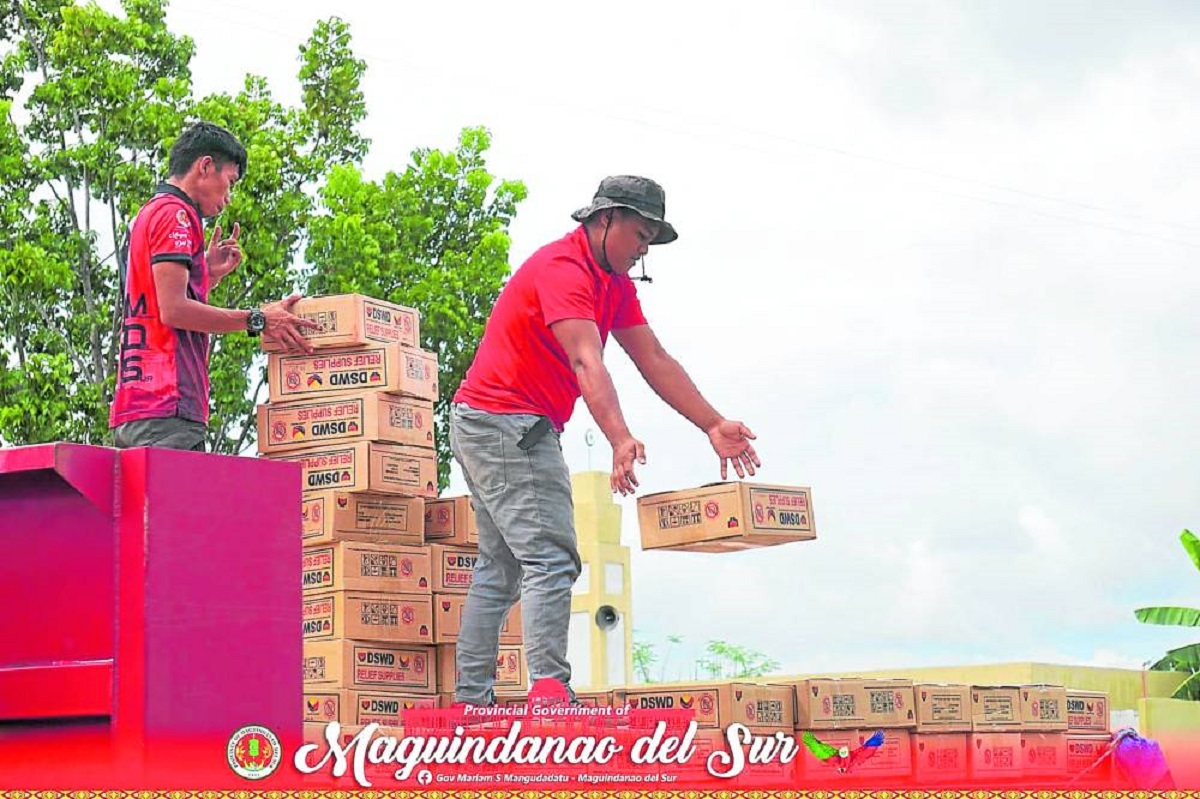Resiliency center eyed to boost disaster response in Mindanao

AID DELIVERY Personnel of the Bangsamoro Ministry of Social Services and Development distribute relief aid to families whose communities were flooded last week, such as Pagalungan town in Maguindanao del Sur. —PHOTO FROM BARMM-MSSD
DAVAO CITY—The Mindanao Development Authority (MinDA) is pushing for the establishment of a resiliency center here to address the region’s vulnerabilities to climate disaster and boost the capability of agencies to respond to calamities.
This developed as the environment department cited Mindanao as the most vulnerable in the country to the impacts of climate change.
According to MinDA Chair Leo Tereso Magno, the agency is firming up the concept, especially on how the center will operate.
Magno noted that resiliency centers had already been set up in Luzon and the Visayas, which led the MinDA board to request President Marcos to have a similar facility established in Mindanao.
Mindanao, which used to be rarely visited by typhoons, is now experiencing an unusual amount of rainfall that has disastrous consequences, he said.
Article continues after this advertisement“Studies show a 50-percent increase in the amount of rainfall we have in Mindanao, and we’ve been having quite a number of calamities. This could have something to do with climate change,” Magno told reporters on the sidelines of Mindanao Development Forum 2024 this week.
Article continues after this advertisementHe added that having a resiliency center might have been overlooked in the past “because we used to brag as [being] typhoon-free.”
“But now that we’re experiencing climate change, we badly need such a facility,” Magno said.

Vehicular traffic stood at a standstill along the national highway in Pagalungan town, Maguindanao del Sur amid rising floodwaters last week. (Photo courtesy of Datu Bulelo ZM Mamasabulod)
‘One-stop shop’
The facility is envisioned to be a one-stop shop in dealing with issues and concerns in hedging against potential disasters and those that crop up during disasters like swift delivery of humanitarian aid.
Speaking during the forum, Environment Secretary Maria Antonia Yulo Loyzaga said that throughout the country, Mindanao stood out as a region most vulnerable to the impacts of climate change, including drought and bouts of torrential rains.
Several provinces in Mindanao, such as Zamboanga del Sur, Maguindanao, Sulu and Zamboanga Sibugay, are exposed to the hazards of sea level rise, extreme weather, extreme heat and tropical cyclones, she said.
Loyzaga said President Marcos had directed the Department of Environment and Natural Resources (DENR) and the Department of Public Works and Highways (DPWH) to work with MinDA to come up with a resilient infrastructure program, where structures are designed and built to withstand the impact of climate change.
She said the DPWH, DENR and MinDA would select the specific national infrastructure projects that would be made more resilient through inputs from climate change projections and protections “that will be afforded in design rather than in retrofitting.”
READ: 21 dead after Typhoon Carina pounds PH – PNP
“We are working together to design climate-resilient multipurpose infrastructure that has the potential to improve the reliability of all the values we associated with critical infrastructures—whether they’d be roads and bridges, farm irrigation [systems] as well as connectivity,” she added.